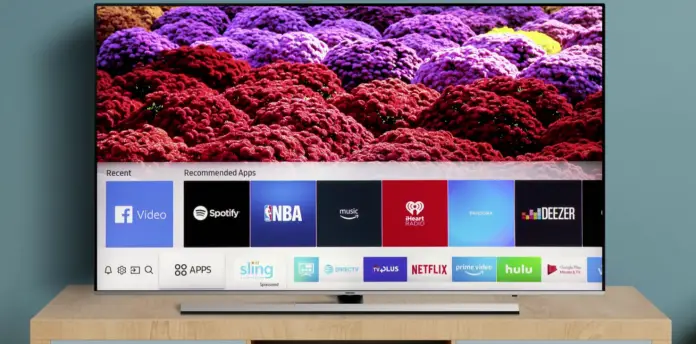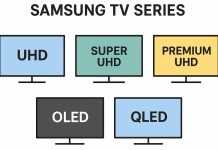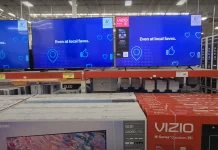Technology is something only some potential buyers understand. And that’s okay, but if you decide to buy a new TV, you need to know what a DLED display is. After all, you’ve seen DLED display in the description of some TV. Now I’m going to tell you what these displays are.
DLED stands for Direct Light Emitting Diode. It means that the screen’s backlighting is located at the back across the entire screen area in a TV. It is only used in LED TVs and their variants.
Varieties of DLED display
- Full-Array LED: In this configuration, LEDs are evenly distributed across the entire back of the screen.This technology often includes local dimming, which allows control of individual LED zones to improve contrast and black depth.
- DLED with Local Dimming: A variant of full array illumination but with local dimming for more precise brightness and contrast control. Local dimming can be implemented in a different number of zones, which affects image quality.
- DLED without Local Dimming: Easier and cheaper to manufacture as it does not require an additional backlight control system. It provides more uniform illumination than Edge LED but without the benefits of local dimming.
- Enhanced DLED (Enhanced DLED): Includes additional technologies or enhancements, such as more advanced backlight control or improved color filters to enhance image quality.
- Mini LED TVs are an advanced form of DLED technology, offering better picture quality thanks to smaller LEDs and improved backlight control. This makes them one of the advanced options in the TV market.
DLED screens typically offer better picture quality than Edge LEDs due to more uniform backlighting and the ability to control brightness precisely. However, it’s worth noting that TVs with full-array LED backlights can be thicker and more expensive than their Edge LED counterparts.
What is DLED screen TV
DLED, standing for Direct LED backlighting refers to a technology where light-emitting diodes are installed across the entire back panel of the display matrix. This technology, prevalent since around 2012, is a standard approach many TV manufacturers use to provide uniform backlighting for their LCD screens.
Companies like LG have developed proprietary terms for this technology, such as FALD (Full-Array Local Dimming). These branded terms serve a marketing purpose while referring to the same direct LED approach. Manufacturers can distinguish their products in a competitive market by assigning a unique name to a widely used technology.
Creating various commercial names for a standard technology is not just about branding; it also has financial implications. When a company trademarks a specific term for a technology, any other manufacturer wishing to use this branded term must negotiate rights, often involving financial transactions. Therefore, these unique names can become an additional revenue stream for the companies that hold the trademarks.
Difference between DLED, LED and mini LED display
When comparing DLED, LED, and Mini LED displays, it is essential to realize that they are all variations of LED (Light Emitting Diode) technology used differently in TV screens, resulting in unique backlighting characteristics”.
- LED TVs: “LED TV” typically refers to LCD screens using LED backlighting. The traditional form is Edge LED backlighting, in which the LEDs are placed at the bottom or side of the screen. This design aims for edge-to-edge distribution, using a particular material with non-uniform reflectivity as a reflector.
- DLED TVs: This type of LED TV, standing for Direct LED, distributes LEDs across the entire back of the screen, unlike traditional LED TVs, which are located at the edges. This arrangement provides more even illumination across the entire screen. In addition, DLED TVs are often equipped with a local dimming function, which increases contrast and improves black levels in some regions of the screen, providing a more dynamic viewing experience.
- Mini LED TVs: Mini LED TVs, a more advanced iteration of LED technology, utilize many small LEDs behind the screen, much larger than conventional displays. This increased number of LEDs greatly expands the local dimming zones, providing careful control over the screen’s brightness and contrast. As a result, Mini LED TVs exhibit superior picture quality with higher contrast ratios and deeper blacks than standard LED or DLED TVs.
DLED is better than LED
In conclusion, DLED (Direct LED) TVs are generally preferable to TVs with simple LED (Edge LED) backlighting. DLED provides more uniform screen illumination and better contrast due to its local dimming capability, improving picture quality, especially in black depth. Meanwhile, Edge LED backlit TVs can suffer from less lighting and poor contrast.
When comparing DLED and LED displays, it’s also essential to consider the type of matrix used in TVs, such as VA (Vertical Alignment) or IPS (In-Plane Switching). These types of matrices affect the picture quality and the type of backlight.
- VA Matrices: Typically offer better contrast and black depth, making them ideal for use with DLED backlighting. This reinforces the contrast and black color advantages of DLED.
- IPS Matrices: They offer wider viewing angles and better color reproduction but often contrast poorly compared to VA. When using IPS matrices with DLED backlighting, more even lighting and improved color display can be achieved.
Thus, the choice between DLED and simple LED backlighting should also consider the type of matrix used in the TV. VA matrices combined with DLED backlighting will provide better contrast, while IPS matrices with DLED will improve viewing angles and color reproduction.








Hi, now the leaders in TV production, Samsung, LG, Sony. Of the Chinese manufacturers, Hisense
Overview of TV manufacturers
TV brands, history, who owns TV brands
Hi my name is Thomas Ormshaw I am involved for the past 7years in producing coffee tables with the tv inside that rises and goes down with one button press.but now find difficulty in finding a manufacture who would supply me a tv to my specific specifications.is it possible that you could put me in the direction where I could find a good company.I thought Panasonic may be a start seeing that are ceasing marketing tv,s here in Australia but I don’t know?.Thanking you in anticipation .Tom